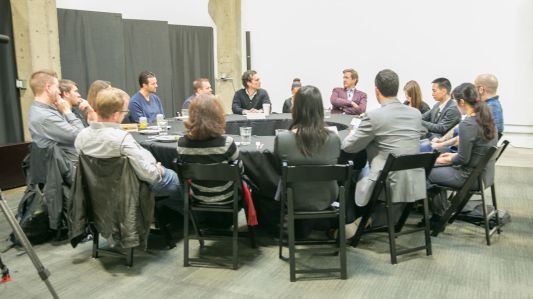Redesigning Product Development in Silicon Valley

This post by Megan Quinn and Mike Abbott first appeared in USA Today, 7/3/13
There is an old tech industry adage that more engineers solve all problems. This is because historically engineers have been the Sherpas of innovation in Silicon Valley, carrying the weight of code, servers and ultimately Moore’s Law on their backs to deliver new products to customers at a rapid pace.
But over the past three years, there has been a fundamental shift in the tech industry’s approach to product development.
The focus for creating great products has moved from engineering to design — from code to pixels. The disciplines of design — customer experience, interaction and visual design — have emerged as competitive differentiators, fueling a new wave of design-focused startups and leaving incumbents scrambling to bring design DNA in-house.
The re-imaging of products and services through a design lens has received significant investment and returns in Silicon Valley.
Square, the Jack Dorsey-led payments startup that seeks to make payments an emotional experience to remember, has raised more than $340 million in venture capital valuing the company at $3.25 billion.
More recently Mailbox, an email application designed for mobile with an emphasis on gestural navigation, was acquired by cloud-storage company Dropbox for a rumored $100 million. Mailbox CEO Gentry Underwood is one of a growing group of designer-entrepreneurs who have traditional user experience backgrounds from design schools and firms such as The Rhode Island School of Design, which counts the founders of AirBnB as alumni, and IDEO.
This evolution in product development priorities has forced previously engineering-centric companies to adapt to evolving customer expectations of simplicity and ease-of-use.
Facebook, a company best known for its hacker “move fast and break things” culture, has spent millions in acquisitions of design talent, most recently purchasing the 16-year-old design firm Hot Studio to fuel its New York presence.
Similarly Google, famous for its relentless focus on engineering, has gone to great lengths to redesign its core product offerings to make them more simple, elegant and customer friendly, touting their typography and use of white space the way the company historically talked about custom servers and deep crawling algorithms.
The single biggest influence on this shift has no doubt been Apple. At the heart of Apple’s product success has been a steadfast appreciation for human-computer interaction (HCI). HCI is the design process of studying, planning and crafting people’s experiences with computers.
This focus came from the top — Steve Jobs was famous for saying, “Design isn’t just what it looks and feels like, it’s how it works.” The result are products that are “magical” and “just work.” If you’ve ever seen a 2-year-old swipe through an iPad on first meeting, you’re seeing the product of truly great design.
The accelerating rise of mobile applications and web browsing has also sharpened the focus on design. The limited screen size and transition to touch navigation means that every interaction, every detail of a product, needs to be thoughtfully considered. Many new startups tout their products as “mobile first” or “mobile only” meaning the user experience has been designed from the ground up with the constraints of mobile devices in mind.
The result of this industry transition to design-focused product development is ultimately better products for consumers and stronger businesses for investors.
Great products and great companies are built at the intersection of pixels and code, the very best interweaving the two disciplines so that the technology fades away to reveal delightful product experiences.
This shift may have started in Silicon Valley, but we’re seeing the results everywhere.